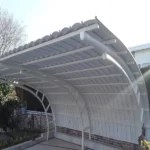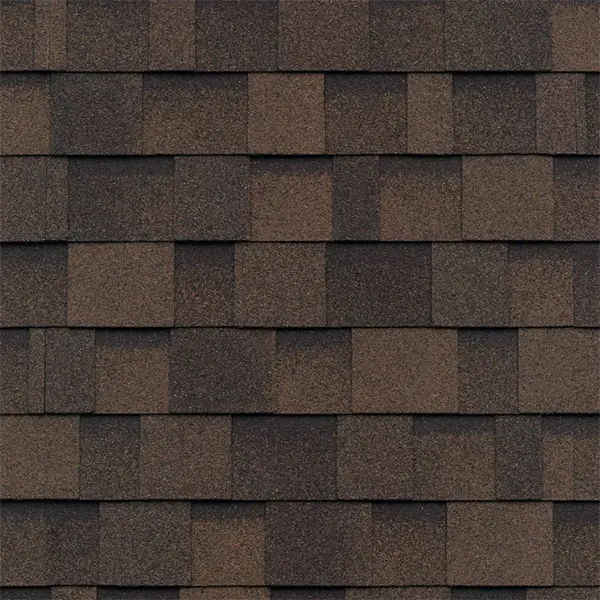Gestalt in architecture and interior design
Do you know what Gestalt is? Are you familiar with its application in architecture? Do you know its principles and rules in architectural design? Gestalt is a psychological theory that explains the way of visual perception by the human brain and in architecture it is defined as the science of form and shape recognition. In simpler terms, Gestalt theory is based on the idea that the human brain tries to perceive complex images or designs that are composed of many elements at first glance instead of understanding them part by part with the unconscious arrangement of parts in a system of organization. Find and organize it simply and provide a summary of it. In architecture and interior design, in order to improve the perception of humans in an environment, you must master the principles of architectural aesthetics and gestalt, which play an important role in this field, for this purpose, in this article, gestalt is examined in architecture and interior design and its application. We discuss its principles and rules in architectural design.
What you read on this page
- Gestalt in architecture and interior design
- Gestalt theory in architecture
- Application of Gestalt in architecture
- The principle of similarity
- The principle of similarity
- Proximity principle
- The principle of continuity
- Bastar principle
- The principle of form and context
- The principle of common destiny
- The principle of overlap
- Principle of symmetry
- The principle of parallelism
- Common area principle
- Principle of connected element
Suggested content: Rhino, the all-in-one architecture software and its features

Suggested article: What is architectural animation + how to make it + suitable software
Gestalt theory in architecture
The word Gestalt is a German word meaning “shape” or “form”, which, due to its broad meaning, has not been directly translated into any of the languages. Gestalt theory or Gestalt psychology was developed in Germany in the early 20th century and was approved by a group of psychologists in 1910 and taught at the University of Berlin. The development of Gestalt theory coincided with the rise of modern art in Europe, this caused the mutual enthusiasm of Gestalt psychologists and caused the interaction and connection of psychology and art more and more in the fields of architecture, commercial arts, industrial design, graphic design and… He left a legacy. Based on Gestalt theories and its close connection with architecture and architectural principles, it provides the ground for the growth and development of this original art in the context of psychology. According to the Gestalt theory, humans tend to simplify patterns and shapes in the mind and convert complex stimuli into simple patterns. change and create a visual connection with its components.
Application of Gestalt in architecture
This theory plays a very important role in any creative field and helps designers develop their cognitive psychology and see things beyond what they are. It helps us interpret this complex world into a simpler and more coherent whole. This theory helps you understand which design elements are most effective in a given instance. Our visual perceptions are strongly influenced by these laws, and hence allow us to focus on certain points, therefore, prompting us to take certain actions and create our plans based on it. This principle states that it is human nature to group similar elements together. Similarity is used to create a single design element from several separate elements that may or may not be adjacent to each other. Similarities can be created using a number of design elements including color, size, shape and texture. Therefore, Gestalt theory in architecture is designed in order to create acceptable and recognizable buildings and its general relationship with other parts based on forms, volumes, sizes, colors, material quality and graphics. Gestalt theory in general and briefly says: The whole is more than its parts and this is the principle that has been emphasized in all researches, experiments and laws defined by experts. The amount of information that the human mind can keep track of is limited, and as a result, when the amount of visual information becomes large and complex , the mind automatically simplifies it and uses the principles of Gestalt in this regard. take Based on these principles, although each of the components of a visual set can have a single meaning, they are all part of a whole that the mind first understands . This whole is a set of components that give them a complete meaning .
The first ten principles of Gestalt include things such as simplicity, shape and context, proximity, similarity, common destiny, symmetry, continuity, closure, common area and element connection, which we will explain each one in the next section.
• Similarity principle • Proximity
principle • Continuity principle •
Closure principle
•
Figure
– Ground principle • Common destiny principle Common Fate principle • Inclusiveness
principle •
Symmetry principle
• Parallelism principle
• Common
Region principle • Element connectedness principle

Suggested article: How to become a successful blogger in architecture, freelancing and dollar income
The principle of similarity
With the human mind, when faced with components that have similar characteristics , it sees as a single set . The three main factors of similarity are size, color and shape. It should be noted that, among these three factors, size has a stronger gestalt than the other two. All three factors of this principle can be seen in the picture below.
The principle of similarity
When faced with components that have similar characteristics, the human mind groups a set of items, objects that are similar to each other, and sees them as a single set. Similarities can be through shape, size, color, texture or other qualities, which among these three factors of size has a stronger gestalt than the other two .
Proximity principle
According to the law of proximity, things that are close to each other are seen as a group and a single set. Proximity of elements can mean that the edges of the tangent elements are close or they overlap, also the most powerful relation of proximity is when they have overlapping shapes. In this principle, objects or elements are perceived as individual objects when they move away from each other.
The principle of continuity
Based on the principle of continuity, the human eye communicates when facing elements that are placed on the same path. This connection continues until something breaks this mental curve. Humans like continuous lines, so even if there is an intersection between two lines, they tend to make them appear as two lines instead of one object. Objects that overlap or intersect are grouped together if convergence appears natural.
Bastar principle
According to this principle, when a part of a shape or design is placed or removed, the eye completes it and sees it as a complete shape . It can be said that this Gestalt principle originates from human perfectionism . Here, it is better to refer to the concept of “pragnanz” as well . Pregnance can be explained in this way that humans naturally seek to complete the incomplete and fragmented experiences of their surroundings. Therefore, when they see a fragmented image, they understand it completely .
The principle of form and context
The principle of shape and background shows that the human mind naturally tends to separate the field of vision into shape (foreground) and ground (background). When he sees things as foreground/in focus (figure) and background/out of focus (ground), he experiences the essence of background form. This is one of the most common and experienced Gestalt theories. Sometimes the shape and the background are so intertwined that it is not easy to distinguish them from each other. One of the most famous examples of this situation is the “Yin and Yang” symbol . In design, this principle is used to direct the viewer’s or user’s focus to what we want them to see.
The principle of common destiny
This principle is more common in moving images . This means that the elements that move together in the same direction are considered by the brain as a single whole. This principle is very important in design and states that elements that move in one direction are more relevant than elements that are stationary or moving in another direction.
Suggested article: What is green architecture (sustainable architecture)? + Benefits of green building
The principle of overlap
This principle states that a visual structure as a whole may consist of a number of smaller gestalts, but the larger gestalt overshadows them due to its stronger presence. gives _
Principle of symmetry
Humans are drawn to symmetry and balance, so they seek to find patterns that are arranged around a central point. This principle says that when two elements have symmetry with each other based on the same axis, the mind connects them even if they are not related.
The principle of parallelism
The human mind considers elements that have similar or close angles as a whole .
Common area principle
According to this principle, elements that come together within a mostly closed range are understood as part of a group .
Principle of connected element
Based on the principle of the connected element, the human mind considers connected elements as a whole .














No comment